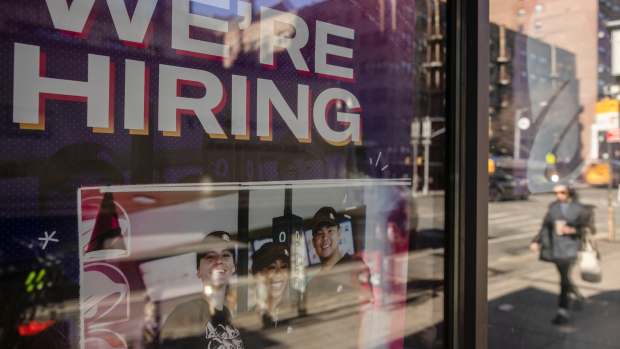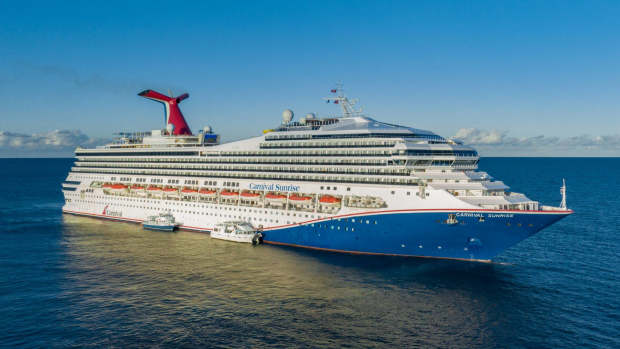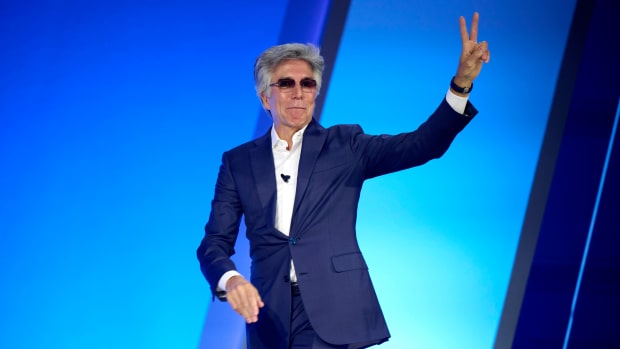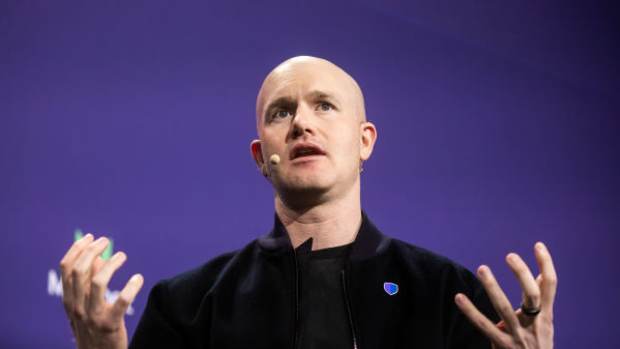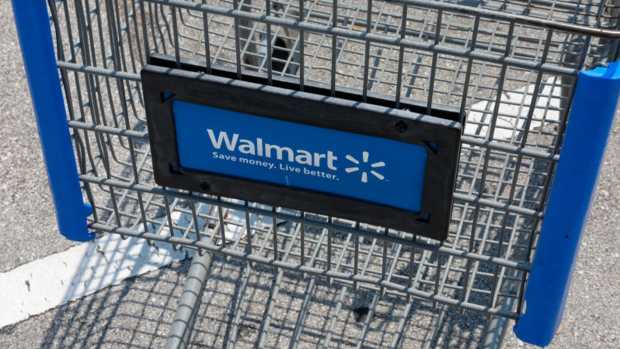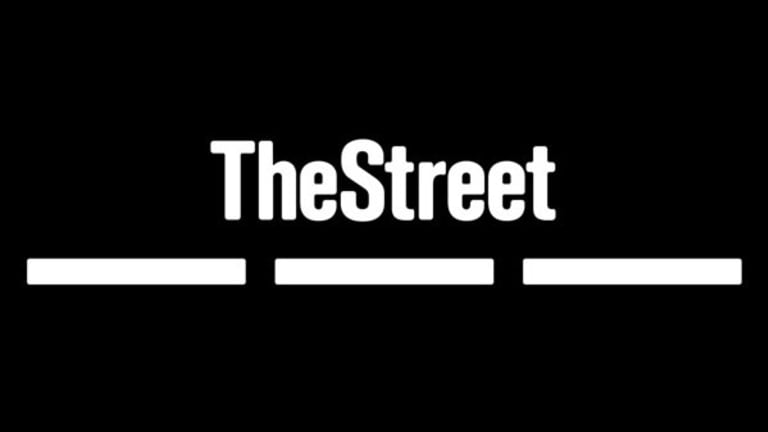
10 Most Profitable Banks Trading Below Book Value
Updated with comment on U.S. Bancorp, along with a price target increase, from Bank of America Merrill Lynch analyst Erika Penala.
NEW YORK (
) -- "The stocks are so cheap and the fundamentals so generally favorable that, in the absence of bad news, the stocks should drift higher."
That's what Oppenheimer analyst Chris Kotowski said on Sunday, when the analyst considered the strong performance for bank stocks year-to-date, and investor fears of big slides for bank stocks, like the ones seen in April 2010 and in November 2011. "Investors are becoming less skittish about bank stocks and beginning to recognize that the fundamental improvements are for real," he said, adding that "the fact that we have effectively de-coupled from the Euro stress in recent months is illustrated by the fact that the
KBW Bank Index
undefined
underperformed by only 8% in this most recent round of nail biting vs. 34% for the European banks."
The KBW Bank Index returned 29% year-to-date, through Monday's close at 50.77, following a 25% decline during 2011. All but two of the 24 index components saw year-to-date gains through Monday. Three of the index components saw year-to-date gains of over 50% through Monday's close, while 15 of the index components saw gains of over 25%.
Of course, European-inspired nail biting is very likely to continue, as the various players negotiate a bailout for the eurozone's most troubled institutions, while also setting up a unified regulatory regime, to give the European Central Bank supervisory powers that are now enjoyed by eurozone member nations.
Turning back to the U.S., Kotowski said that "looking first at the most easily quantifiable benchmark, price to tangible book value ... we can see that on average the
large-cap bank stocks covered by Oppenheimer are trading at just 56% of their historical (2001-2012) average, and within this average, there are some even more exceptional values."
Several of the best-known industry names that traded well below tangible book value at the end of last year have seen stellar returns since then, but still trade below book. At the other extreme, there are companies trading at relatively high multiples to book value, as investors place a premium on strong and steady earnings performance.
A fine example is
U.S. Bancorp
(USB)
, with shares closing at $34.19 Monday, returning 28% year-to-date, following a 2% return during 2011, which itself was rather decent, considering the overall financial sector performance. USB trades for 3.1 times tangible book value, according to Thomson Reuters Bank Insight, but does not appear overvalued, at 11 times the consensus 2013 earnings estimate of $3.04, among analysts polled by Thomson Reuters. After all, the company's operating return on average assets (ROA) for the 12-month period ended June 30 was 1.59%, again, according to Thomson Reuters Bank Insight, while its return on average equity (ROE) for the same period was a solid 14.79%.
Bank of America Merrill Lynch analyst Erika Penala on Wednesday reiterated her "Buy" rating for U.S. Bancorp, while raising her price objective for the shares by two dollars, to $37.00.
Penala said that with since "USB is already trading at a premium multiple on both P/E and P/TBV," many investors are wondering what may be next "in terms of potential catalysts for outperformance." The analyst went on to say that with macroeconomic trends for the second half of this year being "more uncertain," she believes "demonstrated market share gains (loan growth has consistently beat), an established culture of expense control, better diversity from spread income, and strongest
return on tangible equity outlook in our
coverage universe (2013E = 21.3% vs. 11.6% peer median) translates into EPS defensibility and visibility - suggesting further outperformance."
When discussing the large-cap banks covered by Oppenheimer, Kotowski said "On a price to TBV basis the group is at 1.4x vs. 3.2x in the pre-crisis period," and that "on our franchise fundamental measures they are between 36%-66% of their pre-crisis levels." This means "it is the consensus expectation that these franchises are permanently impaired."
The analyst went on to say that "we continue to believe that, over time, US bank stocks will return at least to their historical 70% relative multiple and this implies substantial upside potential."
According to data provided by Thomson Reuters Bank Insight, there are nearly 600 U.S. banks and thrifts trading below tangible book value. Nearly three-quarters of the group have shown an operating profit over the past 12 months, through the end of the second quarter.
Here are the 10 actively traded U.S. bank stocks -- with average daily trading volume of 40,000 shares -- trading below book value, with the highest 12-month ROA, counting down to the most profitable:
10. E*Trade Financial
Shares of
E*Trade Financial
(ETFC)
closed at $9.52 Monday, returning 20% year-to-date, following a 50% decline during 2011.
The shares trade just below their June 30 tangible book value, according to Thomson Reuters Bank Insight, and for 17 times the consensus 2013 earnings estimate 57 cents a share, among analysts polled by Thomson Reuters. The consensus 2012 EPS estimate is 42 cents.
For the 12-month period ended June 30, E*Trade's operating return on average assets (ROA) was 0.34%, while the company's return on average assets (ROE) was 3.32%, according to Thomson Reuters Bank Insight.
While E*Trade Financial is mainly an online brokerage firm, the company is included here because it holds
E*Trade Bank
, which had $47 billion in total assets as of June 30.
E*Trade Financial reported second-quarter net income of $40 million, or $0.14 a share, declining from $63 million, or $0.22 a share, in the first quarter, and $47 million, or $0.16 a share, during the second quarter of 2011. Second-quarter net revenue declined to $452 million, from $489 million the previous quarter, and $518 million a year earlier.
While outgoing CEO Steven Freiberg said the company was "encouraged" by its success in "growing the brokerage franchise and in reducing our legacy credit exposure," he also said that "we continue to face a challenging macro-economic environment with low levels of retail investor engagement," and that "accordingly, we are increasing our focus on strategic cost management, deleveraging, and risk reduction to provide a solid basis for earnings and capital efficiency."
Credit Suisse analyst Howard Chen has a neutral rating on E*Trade, with a target price of $10, and said on August 15 after the company provided an update on its trading volumes in July that "retail brokerage fundamentals at E*Trade were mostly healthy during the month as trading activity improved and net new assets stayed positive."
Factoring in the July trading numbers and a $13 million severance payment to Freiberg, Chen lowered his 2012 EPS estimate for E*Trade by two cents to 46 cents, while maintaining his 2013 EPS estimate of 55 cents and his 2014 EPS estimate of 80 cents.
The analyst said that "despite resilient trends in the core brokerage franchise, mortgage/credit market conditions have been a drag on earnings," and that "while ETFC has taken actions to help alleviate capital concerns and shift the business model back toward the core retail brokerage franchise, we see limited earnings power exiting the cycle given the magnitude of dilution taken to date."
ETFC
data by
Interested in more on E*Trade Financial? See TheStreet Ratings' report card for this stock.
9. Popular, Inc.
Shares of
Popular, Inc.
(OFG)
of Hato Rey, Puerto Rico, closed at $14.27 Monday, returning 29% year-to-date, after dropping 56% last year.
The shares trade for just under half their June 30 tangible book value, and for six times the consensus 2013 earnings EPS of $2.40. The consensus 2012 EPS estimate is $2.06.
For the 12-month period ended June 30, Popular's ROA was 0.39%, while the company's ROE was 3.65%.
The company owes $935 million in bailout funds received in December 2008 through the Troubled Assets Relief Program, or TARP.
Popular reported second-quarter net income applicable to common stock of $64.8 million, increasing from $47.5 million in the first quarter, but declining from $109.8 million during the second quarter of 2011.
The main factor in the sequential improvement and year-over-year decline in earnings was Federal Deposit Insurance Corporation loss-share coverage of assets acquired from the failed Westernbank Puerto Rico in April 2010. Popular reported $2.3 million in loss-share income for the first quarter, compared to loss-sharing expenses of $15.3 million in the previous quarter, and loss-share income of $38.7 million a year earlier.
The company's provision for loan losses on loan balances not covered by loss-sharing agreements declined to $81.7 million in the second quarter, from $82.5 million in the first quarter, and $95.7 million in the second quarter of 2011.
Morgan Stanley analyst Ken Zerbe rates Popular "Overweight," and said in July that the company's "core EPS of $0.32 was surprisingly close to our expectations of $0.33 (although reported results, as usual, were rather messy)," and said that a key point for the second quarter was "better credit experience, including lower
nonperforming assets NPAs and a provision
for loan losses expense that was much less than expected."
Zerbe said that "credit is the one issue that really matters for BPOP."
data by
Interested in more on Popular Inc.? See TheStreet Ratings' report card for this stock.
8. Fox Chase Bancorp
Shares of
Fox Chase Bancorp
(FXCB)
of Hatboro, Pa., closed at $15.47 Monday, returning 24% year-to-date, following a 7% return during 2011.
The shares trade for 0.9 times tangible book value, and for 32 times the consensus 2013 EPS estimate of 49 cents. The consensus 2012 EPS estimate is 39 cents.
For the 12-month period ended June 30, Fox Chase Bancorp's ROA was 0.40%, while its ROE was 2.15%.
Fox Chase Bancorp in March 2010 converted from a mutual holding company structure to full stock ownership. With a three-year moratorium on selling the company drawing to a close, Sterne Agee analyst Matthew Breese sees the company as a takeout target, especially because CEO Thomas Petro and chief operating officer Jerry Holbrook "have sold a bank in the past," and because "insider ownership at FXCB is significant at 12.5% of total shares vs. Northeast peers with a median of 7.4%."
"In addition," according to Breese, "Fox Chase's management team holds the top 3 insider shareholder positions, each with over $1.0 million worth of stock in the company."
The analyst on Sept. 10 raised his price target for Fox Chase by a dollar to $16, to "reflect the potential for a terminal event," saying that if the company were to be sold, "the shares are conservatively worth $18.00 which equates to 150% of required capital and 100% of excess capital given a required capital level of 8.0%" tangible common equity to total assets.
Breese said that "Fox Chase will reach its three-year no-sale moratorium in June 2013, at which point all strategic options will become available, including a potential sale."
Sterne Agee estimates that Fox Chase will report full-year earnings of 42 cents a share for 2012, followed by EPS of 55 cents in 2013.
FXCB
data by
Interested in more on Fox Chase Bancorp? See TheStreet Ratings' report card for this stock.
7. Oriental Financial Group
Shares of
Oriental Financial Group
(OFG)
of San Juan, Puerto Rico, closed at $11.04 Monday, down 8% year-to-date, following a 1% decline during 2011.
The shares trade for 0.7 times tangible book value, and for seven times the consensus 2013 EPS estimate of $1.65. The consensus 2012 EPS estimate is 84 cents.
Based on a quarterly payout of six cents, the shares have a dividend yield of 2.17%.
For the 12-month period ended June 30, Oriental's ROA was 0.47%, while its ROE was 4.41%.
The company on June 28 announced a deal to purchase the Puerto Rico banking operations of
Banco Bilbao Vizcaya Argentaria, SA
(BBVA)
for "$500 million in cash, approximately a 3% premium to tangible book value." Oriental also announced that it had raised $84 million through a private offering of noncumulative convertible perpetual preferred shares with a coupon of 8.75%, with a strike price of $11.77, "as a first step in raising an estimated $150 million in Tier 1 capital." The company said it would pay for the remainder of the BBVA Puerto Rico purchase with "its own excess capital."
Oriental said it would acquire "total assets amounting to $5.0 billion, including $3.7 billion in gross loans, and $3.4 billion in deposits," and that it expected to close the deal by the end of the year.
The company on Sept. 13 filed for a $36 million public offering of common shares.
KBW analyst Derek Hewett rates Oriental Financial Group "Outperform," with a $15 price target, and estimates the company will earn 84 cents a share for all of 2012, followed by EPS of $1.65 in 2013.
Hewett in July called the BBVA Puerto Rico acquisition a "transformational deal that allows OFG the opportunity to remix its balance sheet at a reasonable cost." The analyst expects the deal "to be highly accretive to EPS and we believe over time, OFG will shed its current discount valuation relative to U.S. mainland bank peers."
data by
Interested in more on Oriental Financial Group? See TheStreet Ratings' report card for this stock.
6. Westfield Financial
Shares of
Westfield Financial
(WFD)
of Westfield, Mass., closed at $7.39 Monday, returning 4% year-to-date, following a 15% decline during 2011.
The shares trade for 0.9 times tangible book value, and for 30 times the consensus 2013 EPS estimate of 25 cents. The consensus 2012 EPS estimate is 23 cents.
Westfield Financial pays a regular quarter dividend of six cents a share, and has also been paying a special dividend, twice a year. Based on the regular payout, the shares have dividend yield of 3.25%. Based on the total payout of 49 cents a share over the past year, the shares have a dividend yield of 6.63%.
For the 12-month period ended June 30, Westfield Financial's ROA was 0.49%, while the company's ROE was 2.93%.
Westfield Financial on Aug. 29 announced that its board of directors had authorized a program to purchase up to 5% of its outstanding common stock, or 1,278,560 shares, after completing its previous repurchase plan a few days earlier.
The company reported second-quarter net income of $974 thousand, or four cents a share, declining from $2.3 million, or nine cents a share, the previous quarter, and $2.9 million, or 11 cents a share, a year earlier. Second-quarter earnings were hit because the company "redeemed certain
bank-owned life insurance policies because of a sudden downgrade in the credit ratings of the insurance carrier and the carrier's decision to close out its individual life policies to new sales."
Westfield made an additional income tax provision of $160,000 during the second quarter and recorded a charge to noninterest income of $102,000, "for transferring the policies to a different carrier."
Sterne Agee analyst Mike Shafir has a neutral rating on Westfield Financial, and said that "strong loan growth highlighted" the company's second-quarter, "and the company continued to repurchase shares below tangible book value."
The analyst hinted that the strongly capitalized company could be looking for an acquisition, saying that "near term, we believe buybacks, organic loan growth, and dividends will continue to be the primary capital deployment tools, however, we feel Westfield will continue to explore opportunistic acquisitions to increase profitability."
WFD
data by
Interested in more on Westfield Financial? See TheStreet Ratings' report card for this stock.
5. Bank of America
Shares of Bank of America were up 68% year-to-date, through Monday's close at $9.30. During 2011, the shares dropped 58%.
The shares trade for 0.7 times their reported June 30 tangible book value of $13.22, and for ten times the consensus 2013 EPS estimate of 91 cents. The consensus 2012 EPS estimate is 55 cents
For the 12-month period ended June 30, Bank of America's ROA was 0.52%, while the company's ROE was 4.84%.
With hindsight being 20-20, it's clear that there was a lot of money to be made for investors jumping into BAC shares at the end of last year, or early this year. But the shares have been quite volatile, and the mortgage putback theme is likely to be the main story for the company for some time to come.
During the
alone, Bank of America's mortgage purchase demands from
Fannie Mae
(FNMA)
,
Freddie Mac
(FMCC)
and private investors increased by 41%, to $22.7 billion as of June 30.
Oppenheimer analyst Chris Kotowski on Sunday said that "one could make the argument that BofA looks cheap here as well, but part of that is because the market is already baking in the putback losses and their ultimate impact on
tangible book value."
The analyst shies away from Bank of America for the time being, saying "BofA/Countrywide had $222B of principal at risk as of 1Q11, and we suspect this number is now somewhere between $250B and $300B. With losses to investors in the $125B to $250B range we just can't get comfortable with the potential impact to BAC and some of that is currently reflected in the optically attractive
price-to-tangible-book-value ratio."
data by
Interested in more on Bank of America? See TheStreet Ratings' report card for this stock.
4. Citigroup
Shares of
Citigroup
(C)
closed at $34.06 Monday, returning 30% year-to-date, after a decline of 44% during 2011.
The shares trade for 0.7 times their reported June 30 tangible book value of $51.81, and for six times the consensus 2013 EPS estimate of $5.65. The consensus 2012 EPS estimate is $5.06.
For the 12-month period ended June 30, Citi's ROA was 0.55%, and its ROE was 5.78%.
Citigroup announced on Sept. 11 that it would record a pretax write-down in the third quarter of $4.7 billion -- $2.9 billion after tax -- after the company and Morgan Stanley agreed upon a valuation for the Morgan Stanley Smith Barney joint venture, which was formed in June 2009.
Citigroup in June 2009 sold Smith Barney to the joint venture, booking a gain of $11.1 billion, or $6.7 billion after taxes. Morgan Stanley had the option of purchasing Citigroup's minority stake in the joint venture over a three year period, beginning this year.
Morgan Stanley in June informed Citigroup that it would purchase an additional 14% stake in the joint venture from Citigroup, after which the companies took over three months to arrive at the joint venture's valuation. The two companies announced that week that Morgan Stanley would buy Citigroup's entire stake, taking another 15% by June 1, 2013, and the remainder by June 1, 2015.
Kotowski on Sunday called Citigroup "the hands down winner in terms of attractiveness" on the basis of a valuation to tangible book value "at only 27% of its historical average." The analyst said that "at least "$100 billion of the $191 billion of assets in Citi Holdings are home mortgages," along with $35 billion in Citi's runoff subsidiary of which "a decent chunk
is also housing related," which is "is the single biggest reason for the largest discount to tangible book value in the group is the area that the market is telling us is improving most rapidly."
This makes Citi, ironically, a
.
Kotowski rates Citigroup "Outperform," with s $53 price target, implying 56% upside for the shares, from Monday's close.
data by
Interested in more on Citigroup? See TheStreet Ratings' report card for this stock.
3. StellarOne
Shares of
StellarOne Corp.
(STEL)
of Charlottesville, Va., closed at $13.23 Monday, returning 18% year-to-date, following a 21% decline during 2011.
The shares trade just below their June 30 tangible book value, and for 14 times the consensus 2013 EPS estimate of 97 cents. The consensus 2012 EPS estimate is 92 cents.
Based on a quarterly payout of six cents, the shares have a dividend yield of 1.81%.
StellarOne's ROA for 12 months ending June 30 0.66%, while the company's ROE was 4.62%.
The company reported second-quarter 2012 net income available to common shareholders of $4.9 million, or 0.21 cents a share, declining from $5.5 million, or 24 cents a share, in the first quarter, but increasing from $3.3 million, or 14 cents a share, in the second quarter of 2011.
The second-quarter results included $824,000, or three cents a share, in severance costs. The second-quarter provision for loan losses was $1.4 million, increasing from $850,000 the previous quarter, but declining sharply from $3.2 million a year earlier.
KBW analyst Catherine Mealor rates StellarOne "Market Perform," with a price target of $13, saying in July after the company reported its second-quarter results that the company's better-than-expected results "came on a stable
net interest margin, the result of strong deposit growth and a positive deposit mix shift, which, coupled with liquidity deployment led to 6%
average earning assets growth," although "with negative avg loan growth in the qtr, all of this growth came in the form of fairly low-rate, shorter-term securities."
The analyst added that "coming expense saves could add up to $2M/yr to earnings by 2014, but will be offset by the cost of the planned market growth."
Mealor estimates that StellarOne will earn 90 cents for all of 2012, and also in 2013.
STEL
data by
Interested in more on StellarOne Corp.? See TheStreet Ratings' report card for this stock.
2. Comerica
Shares of
Comerica
(CMA)
of Dallas closed at $32.41 Monday, returning 27% year-to-date, following a 38% decline last year.
The shares trade just below their June 30 tangible book value, and for 12 times the consensus 2013 EPS estimate of $2.70. The consensus 2012 EPS estimate is $2.68.
Based on a quarterly payout of 15 cents, the shares have a dividend yield of 1.85%.
For the 12-month period ended June 30, Comerica's ROA was 0.76%, while the company's ROE was 6.71%.
The company reported that its second-quarter ROA improved to 0.93%. The low price-to-book ratio for the shares reflects in part the pressure on the company's net interest margin in the prolonged low-rate environment. Comerica reported that its second-quarter net interest margin narrowed to 3.10%, from 3.19% in the first quarter and 3.14% in the second quarter of 2011.
Stifel Nicolaus analyst Christopher Mutascio on Friday
to a "Sell" rating, because of "the lack of earnings catalysts and the high P/E multiples."
Mutascio estimates that Comerica will earn $2.61 for all of 2012, followed by EPS of $2.61 in 2013, and said that the shares were trading high even to his "normalized" earnings estimate of three dollars a share.
" The downgrade is not an indictment on management," he said. "In fact, we believe management has done an admirable job in navigating the company through the financial crisis and the ensuing challenging operating environment."
data by
Interested in more on Comerica? See TheStreet Ratings' report card for this stock.
1. KeyCorp
Shares of
KeyCorp
(KEY)
of Cleveland closed at $8.91 Monday, returning 18% year-to-date, following a 12% decline during 2011.
The shares trade just below their June 30 tangible book value, and for ___ times the consensus 2013 EPS estimate of 86 cents. The consensus 2012 EPS estimate is 85 cents.
Based on a quarterly payout of five cents, the shares have a dividend yield of 2.24%.
For the 12-month period ended June 30, KeyCorp's ROA was 1.06%, while the company's ROE was 8.46%.
KeyCorp is one of the best-positioned banks in the wake of the Federal Reserve chairman Ben Bernanke's latest move to stimulate the economy, by increasing the central bank's purchasing of long-term bonds, in an effort to push long-term rates below their already historically low levels. With the target federal funds rate in a range between zero and 0.25% since the end of 2008, most banks have already received most of the benefit of lower funding costs, and are continuing to see their net interest
as assets reprice.
Unlike
Wells Fargo
(WFC)
, which according to Guggenheim Securities analyst Marty Mosby "has the most
today expected over the next year," as the company has a large percentage of assets with original maturities of greater than three years, that are "repricing down now, lower than they were three years ago," KeyCorp has already experienced the bulk of its Fed-driven margin pain.
The company's second-quarter NIM narrowed to 3.06%, from 3.16% the previous quarter, and 3.19% a year earlier.
Credit Suisse analyst Craig Siegenthaler on Sept. 6 said that he expects KeyCorp's "core NIM to experience the largest improvement in the industry given (1) significant debt retirement and refi activity since June, (2) significant CD repricing in 3Q12 and (3) benefit from credit card portfolio acquisition."
KeyCorp in August announced it had acquired $725 million in Key-branded credit card assets from
Elan Financial Services
, taking on about 400,000 consumer and business accounts.
Siegenthaler has a neutral rating on KeyCorp, with a price target of $9, but said he expected the company's "3Q12 and 4Q12 EPS to beat market expectations, and believe investors will increase EPS estimates for 2013/2014 in 2H12."
data by
Interested in more on KeyCorp? See TheStreet Ratings' report card for this stock.
RELATED STORIES:
Banks Need to Dump Brokers: FDIC Director
5 Bank Stocks Bernanke Can't Hurt Anymore
Citigroup Touted As Housing Rebound Play: Street Whispers
Bank Stocks' Fed 'Destruction' Will Hit Hard in 2013
Sell Comerica, Buy Fifth Third: Stifel
--
Written by Philip van Doorn in Jupiter, Fla.
>Contact by
.
Philip W. van Doorn is a member of TheStreet's banking and finance team, commenting on industry and regulatory trends. He previously served as the senior analyst for TheStreet.com Ratings, responsible for assigning financial strength ratings to banks and savings and loan institutions. Mr. van Doorn previously served as a loan operations officer at Riverside National Bank in Fort Pierce, Fla., and as a credit analyst at the Federal Home Loan Bank of New York, where he monitored banks in New York, New Jersey and Puerto Rico. Mr. van Doorn has additional experience in the mutual fund and computer software industries. He holds a bachelor of science in business administration from Long Island University.













